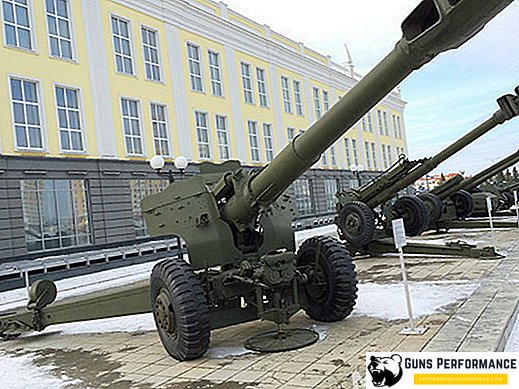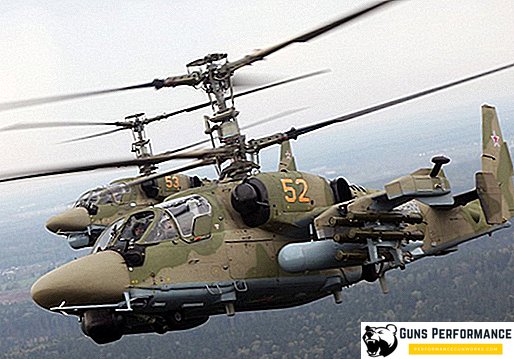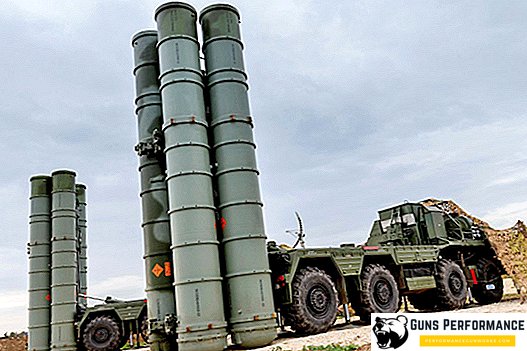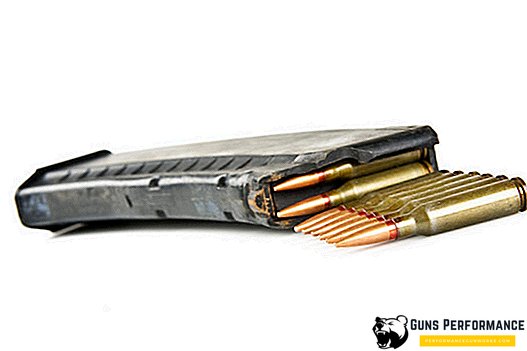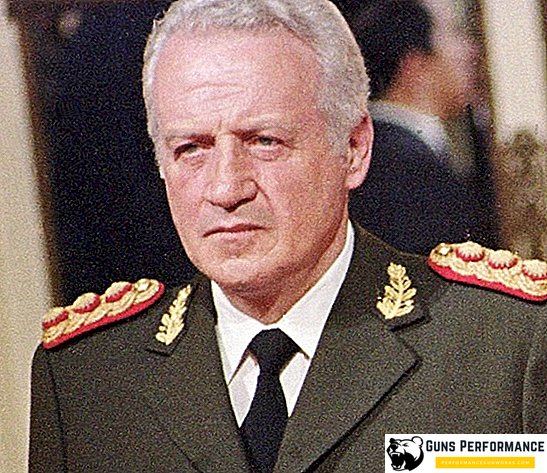IL-20 is an aircraft of electronic warfare and intelligence. Created by the experimental design bureau of S. V. Ilyushin in 1968.
The history of the development and operation of IL-20
In the mid-60s of the 20th century in the Soviet Union it was decided to start developing an aircraft that could conduct electronic intelligence along the state border of the USSR, as well as, if necessary, electronic warfare. Work on the creation of such an aircraft was assigned to the Ilyushin development bureau.
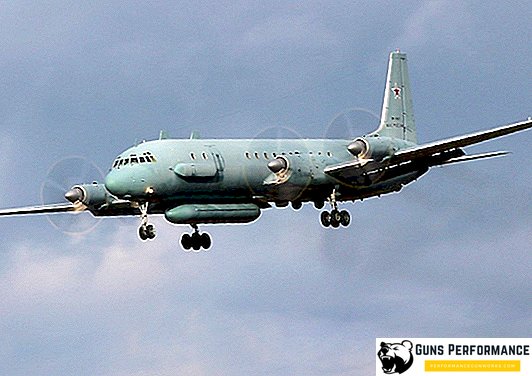
After careful calculations and analysis, the choice of the basis for the development of the new aircraft fell on the Il-18 passenger aircraft, which at that time was one of the most popular Soviet aircraft. The reliability of the IL-18 also allowed its use in various climatic conditions.
In the manufacture of the new aircraft, known as the IL-20, it was decided to abandon the AI-20 engines used on the IL-18 in favor of the more powerful and cost-effective AI-20M. Another feature was the seriously reduced take-off weight of the aircraft, as well as the increased capacity of the fuel tanks, so that the flight range of the IL-20 was increased to 5,400 kilometers. The external differences from the IL-18 include: cameras installed on the sides of the cockpit for conducting advanced aerial photography, as well as a side-viewing radar antenna located in the gondola under the fuselage.
IL-20 was the first aircraft of this type, developed in the Soviet Union. Its development was quite fast, and by the spring of 1968 the first prototype of the aircraft was completely made. In March, the first flight of the IL-20 occurred, in which the car showed good stability in the air and reliability.
After that, the test period of the aircraft began, which the IL-20 went well and in 1969 was put into service. However, it is worth noting that the aircraft did not enter into the composition of aviation units. Due to the uniqueness of the IL-20, its special "specialty", the aircraft were directly subordinated to the headquarters of military districts or fleets of the Soviet Union.
The combat service of the aircraft was to participate in various exercises, combat duty, as well as performing reconnaissance flights. However, with the onset of the obsolescence of the IL-20 and the electronic equipment installed on them, the aircraft were re-equipped into transport and cargo.
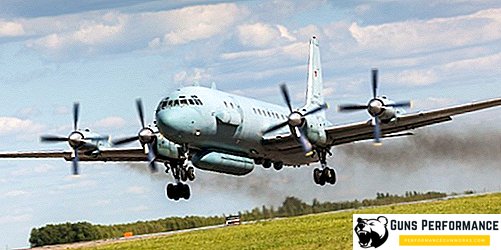
In 1980, the IL-20RT was created on the basis of an improved Il-18D passenger aircraft. The IL-20RT was used as a telemetry aircraft for missile testing and was based in the Baikonur area. Also at the same time, an air command post was created on the basis of the IL-18D, called the IL-22. An interesting detail is that almost all the IL-20 and IL-22 aircraft were painted in the standard colors of Aeroflot, and also had the inscription IL-18 on the sides.
Already in 2009, it was decided to start work on the conversion of the IL-22 into an aircraft jammer, designated IL-22PP. Two years later, tests of the finished machine began, and in 2018 three Il-22PP aircraft were transferred to the customer.
Overview IL-20 and its performance
Aerodynamically, the IL-20 is a low-profile normal circuit. The tail of the aircraft - single-chin. Chassis - tricycle. The nose landing gear is located under the fuselage, and the side - under the gondolas of the aircraft engines. The Il-20 power plant is represented by 4 single-shaft AI-20M turboprop engines.
The aircraft is equipped with advanced aerial photography cameras of the A-87P model, as well as the Romb-4 radio intelligence station. Also on the IL-20 installed radar "Igla-1" and the station of electronic reconnaissance "Kvadrat-2". The passenger cabin of the aircraft is equipped to accommodate six (then eight) operators serving the radar equipment.
Flight characteristics of the IL-20:
| Wingspan, m | 37,4 |
| Aircraft length, m | 35,9 |
| Airplane height, m | 10,2 |
| Wing area, m2 | 140,6 |
| Weight, kg | |
| empty aircraft | 33760 |
| maximum takeoff | 64000 |
| engine's type | 4 AID-20M |
| Power, hp | 4 x 4250 |
| Maximum speed, km / h | 675 |
| Cruising speed, km / h | 620 |
| Practical range, km | 6200 |
| Practical ceiling, m | 10000 |
| Crew | 13 |
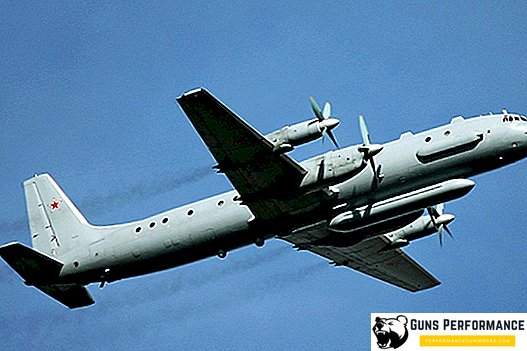
Modifications of the IL-20
There are nine modifications of the IL-20:
- Il-18D "Igla" - an experimental model of the IL-18, converted for conducting electronic intelligence. Equipped with a radar station "Igla-1", from which it received the name. Another model name: "Product 20".
- IL-18RTL - a modification of IL-18D, converted into a telemetry aircraft, used for testing missiles.
- IL-20M - the main model of the IL-20. Aircraft electronic intelligence and combat.
- IL-20M1 - aircraft equipped with modernized electronic warfare systems and radio engineering complex.
- IL-20RT - modification of IL-20, converted into an airplane - a flying laboratory for telemetry. Used when testing missiles.
- IL-22 "Bison" - modification of the aircraft used as an air command center.
- Il-22M-11 "Zebra" - an improved model of the IL-22.
- IL-22M-15 - the last developed modification of the aircraft, used as an air command center.
- IL-22PP "The Chopper" - a modification of the IL-22, used as an electronic warfare aircraft, as well as a jammer.
Strengths and weaknesses of IL-20
The IL-20 was created on the basis of the IL-18 passenger aircraft, therefore it has a practically identical design, which means that it completely “inherited” all its positive and negative aerodynamic characteristics from its passenger counterpart. The stability of the aircraft in the air and its reliability are also the result of this "relationship".
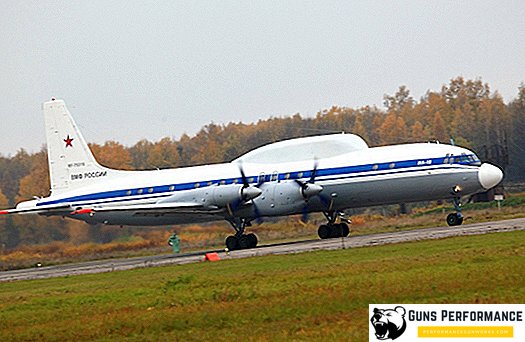
If we talk about the characteristics of the IL-20, associated exclusively with its main activity, it should be noted here that he was the first aircraft of a similar nature designed and produced in the Soviet Union. Nevertheless, during the years of service in the Armed Forces of the USSR, the plane showed itself from a good side. So, IL-20 regularly served and did not let on the exercises. A large number of aircraft modifications prove that its concept was chosen very well, thanks to which the IL-20 is in service today, almost 50 years after its first flight.
However, the fact that the IL-20 is already morally obsolete is disappointing, and this may cause its early decommissioning, and immediately after the appearance of the new electronic warfare and reconnaissance aircraft.
Conclusion
The IL-20 is an airplane, by the number of its modifications and the range of functions performed, is very unique. Nevertheless, it should be noted that the period of the main dawn of the aircraft is already behind, and it does not have great prospects in the future because of its obsolescence.


